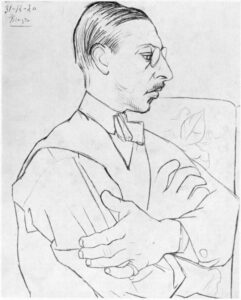Stravinsky, Octet for Wind Instruments

Once you have set the music world on fire by writing The Rite of Spring, arguably the 20th century’s most consequential work, what do you do next? We answer that question this month with a detailed look at Stravinsky’s life and music in our Composer of the Month series. But I want to offer up this relatively short work here.
Igor Stravinsky (1882-1971) had composed three ground-breaking ballets for Sergei Diaghilev’s Ballets Russes in Paris from 1910 to 1913: The Firebird (1910), Petrushka (1911) and The Rite of Spring (1913). These are his most performed works today. World War I erupted the next year, and the post-war world after 1918 would have a very different artistic landscape.
Stravinsky lived in Switzerland during WWI but returned to France in 1920. The next 20 years or so, between the two world wars, mark Stravinsky’s neoclassical period. While the three ballets mentioned above were large-scale works that announced the end of Romanticism and the onset of modernism, the neoclassical works mostly employ small forces and look back Baroque and Classical forms. They are some of Stravinsky’s most engaging works.
The Octet for Wind Instruments (1922-23) looks to older traditions in several ways. The use of winds alone draws a distinction with the prevalent use of strings in the Romantic period and recalls the Harmonien popular in the Classical era. Stravinsky gives traditional names to the three movements (Sinfonia, Theme and Variations, and Finale) and uses Classical forms and tonality. But the works also looks forward with elements of jazz and an improvisatory style.



